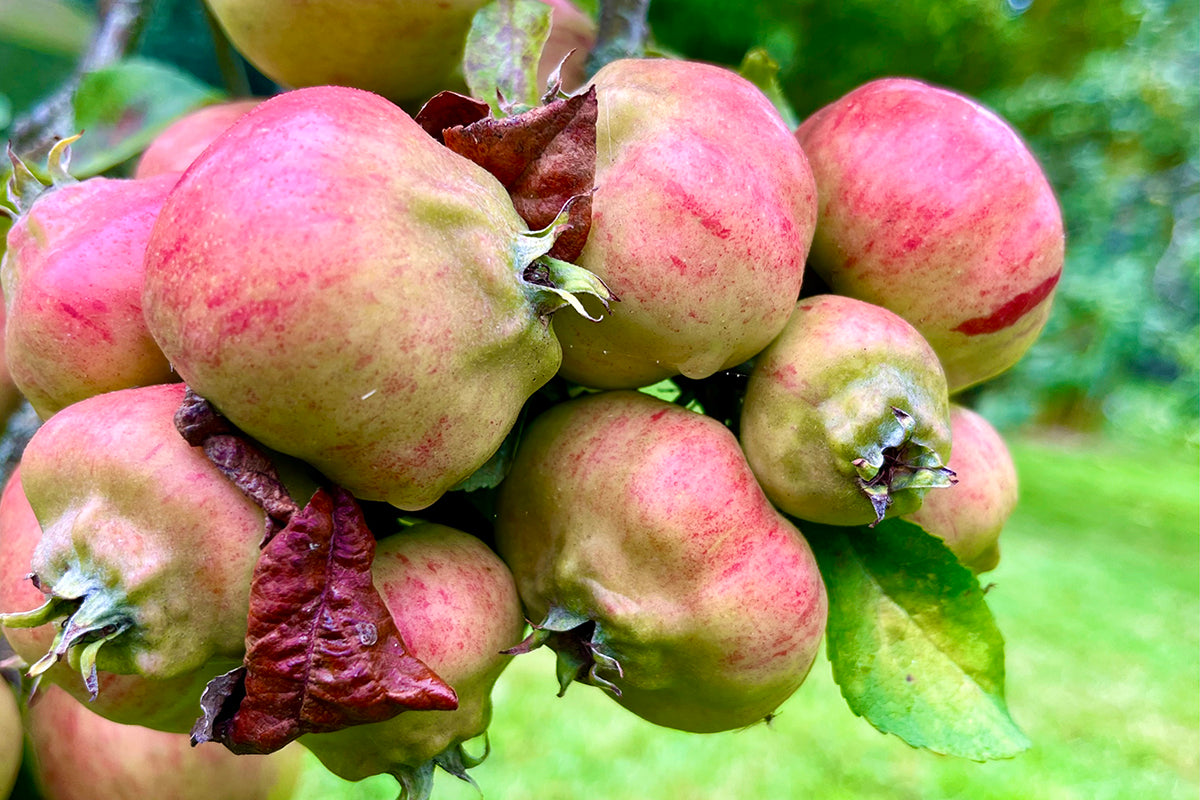Poor performance

We love our orchard here at Genus HQ. With 21 trees it’s a great source of fruit. Apples, pear, cherries, and plums, all behave differently cropping variably from year to year. We’ve had our bumper years of course. Four years ago we had more cherries than we have ever produced before or since. Plums have proved to be fairly constant in their cropping and tend to be reliable from year to year.
We’d usually say the same for our apples and pears but this year has been incredibly poor. If it wasn’t for our dependable ‘Beauty of Bath’ which we picked a few weeks ago, this season would almost have been a write off. It has of course been an unusual year. A very prolonged cold spell over winter, an extremely hot June, and an extended wet and cool period ever since. The ‘June drop’ where trees shed excess fruit to allow those remaining fruits access to nutrients and moisture just didn’t seem to happen. Yes a few fruits fell, but the resulting overcrowding has left us with branches laden with crowded, deformed, and undersized fruits that certainly won’t be good for the table, the only possibility being a few bottles of juice.
It seems it’s quite common. Many small orchards or trees we’ve spotted in our travels seem to be suffering from the same problem. We suspect it's just an anomaly and next year things will return to normal. Commercial growers have said that it’s been a challenging year for UK growers and there won’t be a bumper crop in 2023.
There is also a worry that milder winters (apart from last year) mean that apples are not receiving enough ‘chilling hours’ for the trees to lie dormant in the winter and conserve energy for fruit growing. Warmer temperatures are also leading to changes in taste and texture as well as effects on acid levels and fruit firmness. We’ll report back from the Genus orchard next year with the hope that the old patterns have re-established themselves.











